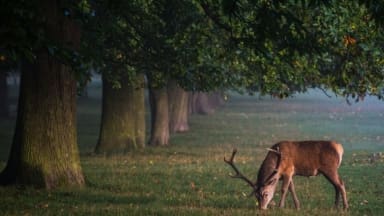
The i-Tree Eco model is used in urban and forestry settings to estimating carbon storage in trees, and are based on the growth patterns of plantation trees – grown in herbivore-free landscapes. But how does herbivore browsing affect the biomass balance of scrub?
In a recent study, entitled ‘The inadequacy of current carbon storage assessment methods for rewilding: A Knepp Estate case study‘, Nancy Burrell challenged the traditional view that herbivore browsing stunts tree growth and reduces biomass. In fact, their findings showed that under browsing pressure, the trees reallocate their biomass, and thereby potentially enhancing their carbon storage capacity in scrubland environments.
“In our study, we tested the assumption of a 0.26 root:shoot ratio of biomass on our destructive samples, which revealed a startling fact: the actual root:shoot ratio stands at 1.07, over four times higher than current models predict”, explained Burrell.
According to the research, traditional models have been ignoring what happens underground. “We’ve been so fixated on trees that we’ve neglected the smaller, non-forestry species. We have no idea how much carbon they might store not only above ground but below ground too, in their roots, and how this storage maybe stimulated by the browsing of the free-roaming herbivores that drive rewilding projects”, said Burrell.
The researchers explain that in Cretan wood pastures, for example where the open-grown oaks have been nibbled by sheep for centuries, the trees have developed a unique defence system. The oaks have evolved to thorny structures with compact leaves, multiple stems, and importantly reallocated biomass to their roots.
Similar to the Cretan oaks, their investigations on the Knepp Estate of five tree species (oak, sallow, hawthorn, blackthorn and dog rose) showed that there was no correlation between height and width. Hence, trees in rewilded areas adopt a different growth strategy, protesting defensive, protective mechanisms rather than focussing on growth in terms of height & width.
This new research calls for a re-evaluation of ecological monitoring and carbon accounting methods in (more) dynamic ecosystems.
